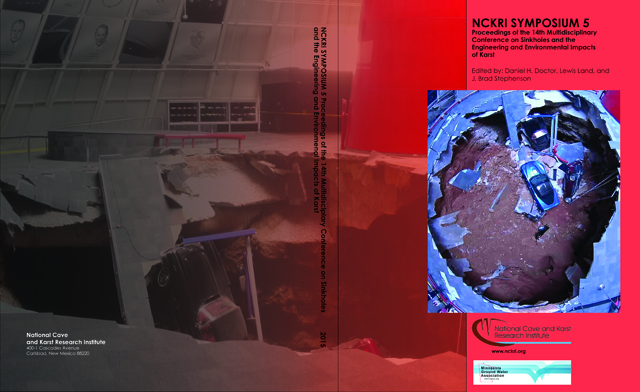Abstract
Zengpiyan Cave, one of the most important cave hominin sites of the Neolithic in the South of China, was listed on the national register of cultural preservation sites in 2001. Large quantities of precious material in the Zengpiyan site were unearthed since the beginning of the trial excavation in 1973. These materials include hominin skeletal remains, fire pits, human burials, stone implements, tools fashioned from mollusk shells and animal or plant fossils. According to the historical record, ancient people lived in caves in the karst plain of Guilin. They moved out of the caves approximately 7000 years ago. These cave hominin sites provide important material for understanding ancient environmental change and human prehistory. However, the exploratory shaft of Zengpiyan had no appropriate treatment after the initial excavation. Groundwater flooded the exploratory shaft due to frequent rises in the water table, resulting in collapse of the exploratory shaft shoring as well as some other serious damages. Even though some rescue and protection measures were taken, for example, slope supporting and backfill treatment, they failed to eliminate the hidden trouble caused by rapid fluctuation of groundwater levels during the rainy season. Rapid urbanization is also affecting this region. Infrastructure construction of the city changes the hydrogeological conditions of the karst, increasing the area of impervious surface and risks of urban flooding. Moreover, an increase of extreme climate events may lead to frequent flooding of the site by groundwater. Therefore, a focused hydrogeological investigation was carried out to study the status of the site and karst development, and the mechanism of groundwater movement at local and regional scales. These surveys include borehole drilling, electrical resistivity surveys, computed tomography (CT) scanning technology, dye tracer tests, groundwater monitoring, and hydrochemistry analysis. The results show that the site is located in the seasonal fluctuation zone of the groundwater. Water level in the karst aquifer is sensitive to rainfall. Continuous rainstorms lead to synchronous rising of the groundwater level in both the cave and the aquifer. In addition, surface runoff and urban sewers cannot discharge smoothly, resulting in surface water backflooding into the cave entrance. Therefore, controlling the recharge of groundwater and the influx of surface runoff, and dredging a groundwater discharge channel are all important in order to reduce the damage of flooding to the archaeological sites. Based on these detailed investigations and research results, countermeasures for flood control and archaeological site protection were put forward. We recommend that the engineering measures should combine curtain grouting, drain construction, and effective water resources management for the entire basin. Even though the measures are feasible, we can’t promise a perfect damage control of the ruins by water due to the complex hydrogeological conditions in the covered karst area.
Rights Information
DOI
http://dx.doi.org/10.5038/9780991000951.1018
Hazard of Sinkhole Flooding to a Cave Hominin Site and its Control Countermeasures in a Tower Karst Area, South China
Zengpiyan Cave, one of the most important cave hominin sites of the Neolithic in the South of China, was listed on the national register of cultural preservation sites in 2001. Large quantities of precious material in the Zengpiyan site were unearthed since the beginning of the trial excavation in 1973. These materials include hominin skeletal remains, fire pits, human burials, stone implements, tools fashioned from mollusk shells and animal or plant fossils. According to the historical record, ancient people lived in caves in the karst plain of Guilin. They moved out of the caves approximately 7000 years ago. These cave hominin sites provide important material for understanding ancient environmental change and human prehistory. However, the exploratory shaft of Zengpiyan had no appropriate treatment after the initial excavation. Groundwater flooded the exploratory shaft due to frequent rises in the water table, resulting in collapse of the exploratory shaft shoring as well as some other serious damages. Even though some rescue and protection measures were taken, for example, slope supporting and backfill treatment, they failed to eliminate the hidden trouble caused by rapid fluctuation of groundwater levels during the rainy season. Rapid urbanization is also affecting this region. Infrastructure construction of the city changes the hydrogeological conditions of the karst, increasing the area of impervious surface and risks of urban flooding. Moreover, an increase of extreme climate events may lead to frequent flooding of the site by groundwater. Therefore, a focused hydrogeological investigation was carried out to study the status of the site and karst development, and the mechanism of groundwater movement at local and regional scales. These surveys include borehole drilling, electrical resistivity surveys, computed tomography (CT) scanning technology, dye tracer tests, groundwater monitoring, and hydrochemistry analysis. The results show that the site is located in the seasonal fluctuation zone of the groundwater. Water level in the karst aquifer is sensitive to rainfall. Continuous rainstorms lead to synchronous rising of the groundwater level in both the cave and the aquifer. In addition, surface runoff and urban sewers cannot discharge smoothly, resulting in surface water backflooding into the cave entrance. Therefore, controlling the recharge of groundwater and the influx of surface runoff, and dredging a groundwater discharge channel are all important in order to reduce the damage of flooding to the archaeological sites. Based on these detailed investigations and research results, countermeasures for flood control and archaeological site protection were put forward. We recommend that the engineering measures should combine curtain grouting, drain construction, and effective water resources management for the entire basin. Even though the measures are feasible, we can’t promise a perfect damage control of the ruins by water due to the complex hydrogeological conditions in the covered karst area.

